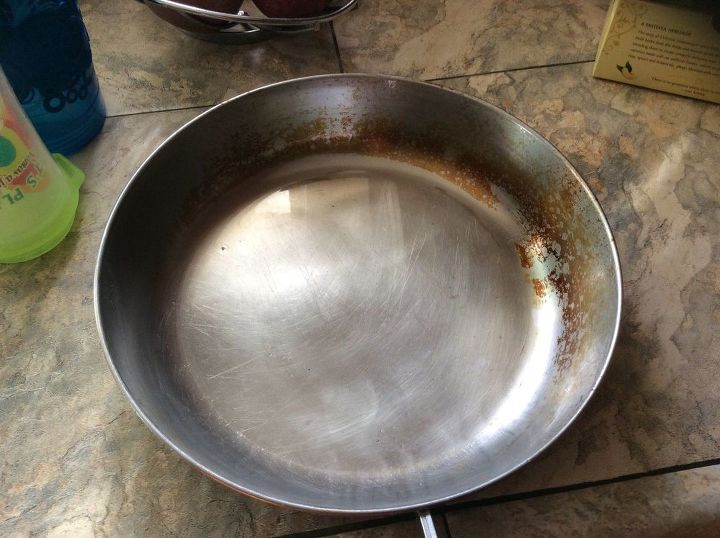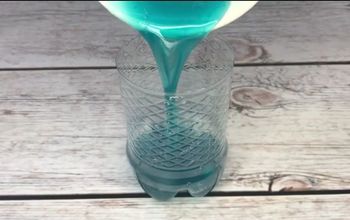Tips for cleaning stainless steel?
Related Discussions
How to clean a mirror without streaks?
Every time I clean my mirrors, they end up having tons of streaks and almost look worse than before I started. What could I use to clean them that won't leave streaks... See more
How to clean burns on stainless steel pans?
Help! I burned my pan. How do I clean stainless steel cookware that's been burned?
How to clean hardwood floors in the kitchen?
What is the best way to clean hardwood floors in the kitchen?
How to clean my kitchen cabinets from grease?
My kitchen cabinets are embarrassingly greasy. Please share your degreasing tips with me so I don't have to cringe every time I glance at my cabinets.
Best way to clean stainless steel refrigerator?
I clean houses and one of my biggest problems is cleaning the stainless steel appliances, they always come out looking blotchy and streaked. Anyone have an idea for m... See more


Hi there, I prefer vinegar in all of my cleaning. Here's an article all about how to use it to clean stainless steel!
https://www.thekitchn.com/how-to-clean-stainless-steel-appliances-with-vinegar-and-oil-cleaning-lessons-from-the-kitchn-205232
The first thing to know when considering how to clean stainless steel appliances, sinks, and countertops is what not to do. Some popular cleaning products will damage the finish on stainless steel, and even plain water can leave unsightly marks and spots if not used properly. Despite its name, stainless steel can and does stain. So first and foremost, for clean stainless steel surfaces, these are products and techniques to avoid:
– DON’T use chlorine bleach or any product containing chloride.
– DON’T use oven cleaners.
– DON’T use steel wool, steel brushes, or highly abrasive scrubbing pads—these can cause scratches or leave a residue of small particles that may rust.
– DON’T use abrasive cleansers on brushed stainless steel.
– DON’T clean a stainless steel surface unless it is cool to the touch.
– DON’T use gritty, dirty, or excessively hard water, as it can leave spots or brownish stains.
Pay attention to your owner’s manual, following the cleaning and care instructions to the letter. Some new stainless steel appliances are treated with a clear-coat finish at the factory, and some cleaning products can strip or mar that finish.
• One of the best habits to adopt when cleaning stainless steel is to wipe down your appliances with a damp, soapy washcloth every time you do the dishes; rinse the washcloth with clean water, and wipe again to remove any soap; then finish with a wipe of a dry terry towel.
• Always wipe in the direction of the stainless steel “grain,” starting at the top of the appliance and working your way down towards the floor.
• To tackle heavier grease or baked-on foods, use a nylon scrubbie, a mild detergent, and hot water. Be sure to rinse the surface and towel dry to prevent water spots or staining after you have cleaned the stainless steel surfaces.
• Removing really tough dirt and stains requires a paste of baking soda mixed with liquid dish soap gently scrubbed into the grain using a nylon scrubbie or an old toothbrush. If some stains remain, use undiluted vinegar, again scrubbing gently with a soft brush. Be sure to rinse and towel dry.
• You may want to buff your appliances periodically after cleaning stainless steel with a stainless steel polish, lemon/mineral oil, or a silicone-based spray to maintain a lustrous finish. Apply the polish in the direction of the grain with a lint-free cloth; buff and dry with another lint-free cloth.
There are numerous non-abrasive cleaners and polishes that are designed specifically for use on stainless steel. Some people use 3M professional grade, but there are several other highly recommended brands, including Bar Keeper’s Friend, Cerama Bryte, Sprayway, and Weiman. When in doubt, always test your stainless steel cleaner on a surface that’s somewhat hidden, like the back or sides, before moving on to clean stainless steel on the most visible areas, including an appliance’s front or top of a kitchen counter.
Wal-Mart sells a stainless cleaner works pretty good
Hi Diana. I use Windex on my stainless appliances. It works well and doesn't leave behind any streaks or residue. This was a tip from Martha Stewert.
Sos pads work pretty good.
Here's a post that might help - https://chascrazycreations.com/homemade-cleaner-for-stainless-steel/